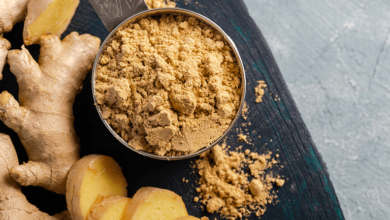HEADACHE: fast and great battle to destroy headaches now!

Headache are a common ailment that many individuals face, and the good news is that there are several simple and effective remedies that can help alleviate the pain without the need for a trip to the doctor. In this comprehensive guide, we will explore various techniques and strategies that can provide swift and lasting relief.
headache, One of the most effective ways to ease the discomfort of a migraine is to utilize the power of cold therapy. By placing a cold pack, such as a bag of frozen vegetables or a wet towel cooled in the refrigerator, on your forehead, you can constrict the blood vessels and reduce inflammation, leading to a significant reduction in pain. It’s recommended to apply the cold compress for 15 minutes, followed by a 15-minute break, and repeat as needed.

On the other hand, for tension headaches, the application of heat can be incredibly beneficial. Placing a heating pad or hot compress on the back of your neck or the base of your skull can help to relax the muscles and alleviate the tension that often contributes to this type of headache. If you’re experiencing a sinus headache, holding a warm cloth to the affected area can also provide relief by promoting sinus drainage and reducing pressure.
Another common culprit of headaches is external pressure or compression on the scalp or head. Wearing tight-fitting accessories, such as hats, headbands, or even swimming goggles, can lead to what are known as “external compression headaches.” If you suspect this to be the case, try loosening or removing the offending item and see if the pain subsides. Lastly, it’s important to be mindful of your environment and its impact on your headaches.
Table of Contents
Bright or flickering lights, including those from computer screens and fluorescent bulbs, can trigger migraine episodes. To mitigate this, consider investing in blackout curtains or wearing sunglasses when outdoors to limit your exposure to harsh lighting. Additionally, taking frequent breaks from digital screens can help to reduce eye strain and minimize the risk of headaches.
By incorporating these simple yet effective techniques into your daily routine, you can take control of your headaches and find relief without the need for medication or a visit to the doctor. Remember, everyone’s body is different, so experiment with these methods to determine which ones work best for you. With a little trial and error, you’ll be well on your way to feeling better in no time.

You might also consider adding anti-glare screens to your computer and using daylight-spectrum fluorescent bulbs in your light fixtures. Reducing eye strain and exposure to harsh artificial lighting can go a long way in preventing and relieving headaches. The soft, natural-looking glow of daylight-spectrum bulbs is easier on the eyes compared to the harsh, blue-tinted light of typical fluorescent bulbs.
Chewing gum can hurt not just your jaw but also contribute to headache pain. The constant tensing and movement of the jaw muscles can lead to muscle fatigue and spasms, which can radiate pain up into the temples and forehead. The same is true for chewing your fingernails, lips, the inside of your cheeks, or handy objects like pens.
Avoid crunchy and sticky foods as well, and make sure you take small bites when eating. If you grind your teeth at night, be sure to talk to your dentist about getting a custom-fitted mouth guard. This simple device can help prevent nighttime teeth grinding, which is a common cause of early-morning headaches.
Drinking plenty of liquids, especially water, is crucial for maintaining proper hydration and preventing headaches. Dehydration can cause headache pain or make an existing headache significantly worse. Aim to drink at least 8 glasses of water per day, and more if you are physically active or live in a hot, dry climate.
Having some tea, coffee, or another caffeinated beverage early on in a headache can actually provide relief. Caffeine has vasoconstricting properties, meaning it can help reduce inflammation and swelling in blood vessels, which are common triggers for headache pain. Caffeine can also enhance the effectiveness of over-the-counter pain relievers like acetaminophen. Just be sure not to overdo it, as too much caffeine can lead to withdrawal headaches later on.
Taking the time to engage in relaxation techniques like stretching, yoga, meditation, or progressive muscle relaxation can be very beneficial when dealing with a headache. These practices help reduce muscle tension, lower stress levels, and promote a calming mind-body connection – all of which can alleviate headache pain. If you experience persistent muscle spasms or tension in your neck, you may want to talk to your doctor about trying physical therapy as well.
Gently massaging the temples, neck, and shoulders can help release built-up muscle tension that contributes to headache pain. You can do this yourself using your fingertips or the palms of your hands in circular, kneading motions.
Applying a small amount of diluted essential oil, like peppermint or lavender, can also enhance the soothing and relaxing effects of self-massage. Massaging specific areas of your head and neck can be an effective way to alleviate the discomfort associated with tension headaches, which are often triggered by stress.
By gently massaging your forehead, temples, and the back of your neck, you can help relax the muscles that have become tense and constricted, contributing to the pain. Start by using the pads of your fingers to apply light, circular motions to your forehead, working in a gentle, soothing manner. Focus on any areas that feel particularly tight or sensitive.
Gradually move down to your temples, using the same circular technique to release the tension in these regions. Next, move your attention to the back of your neck, where the muscles can become strained and contribute to tension headaches. Use your fingertips to apply gentle, rotating pressure, starting at the base of your skull and working your way down the length of your neck.
Avoid pressing too hard, as this can sometimes exacerbate the discomfort. In addition to the soothing effects of the massage, the increased blood flow and release of muscle tension can help alleviate the symptoms of a tension headache. Remember to breathe deeply and try to relax your whole body during the process, as this can further enhance the benefits.
If the massage alone does not provide sufficient relief, you can also try applying a warm compress or ice pack to the painful areas. The warmth can help to improve circulation and promote muscle relaxation, while the cold can have a numbing effect and reduce inflammation. By incorporating these simple, self-care techniques, you can often find effective relief from the discomfort of a tension headache without the need for medication. However, if the headaches persist or worsen, it’s important to consult a healthcare professional to rule out any underlying medical conditions.
A small recent study found that taking ginger, in addition to regular over-the-counter pain meds, eased pain for people in the ER with migraines. Another found that it worked almost as well as prescription migraine meds. You can try a supplement or brew some tea.
Ginger: A Natural Remedy for Migraine Relief Migraines can be debilitating, causing intense throbbing pain, nausea, and sensitivity to light and sound. While over-the-counter and prescription medications can provide relief, some people are seeking more natural solutions. Emerging research suggests that ginger, a versatile spice with potent anti-inflammatory and pain-relieving properties, could be a useful addition to a migraine management plan.
A recent study, albeit small in scope, found that taking ginger alongside regular over-the-counter pain medications provided significant relief for people seeking emergency treatment for migraines. Remarkably, another study indicated that ginger was nearly as effective as prescription migraine medications in alleviating symptoms.
This is particularly promising for those looking to explore more natural approaches or who may have difficulty tolerating pharmaceutical options. Ginger can be consumed in a variety of ways to potentially ease migraine pain. You can try taking a ginger supplement, which concentrates the active compounds. Alternatively, brewing a soothing ginger tea can be a simple and delicious way to incorporate this potent root into your routine.

Ginger’s anti-inflammatory effects may help reduce the inflammation that contributes to migraine attacks, while its pain-relieving properties could provide direct relief. While more research is needed to fully understand ginger’s mechanisms and establish optimal dosages, the existing evidence suggests it may be a valuable complementary tool for managing headache, migraines. Speak with your healthcare provider to determine if incorporating ginger into your migraine treatment plan could be a suitable option for you.
Ginger, a vibrant and pungent root, has long been celebrated for its extensive health benefits. One of its lesser-known yet remarkable properties is its ability to alleviate headaches. The active compounds in ginger, such as gingerol and shogaol, possess potent anti-inflammatory and analgesic (pain-relieving) properties that can effectively target the underlying causes of various types of headaches.




